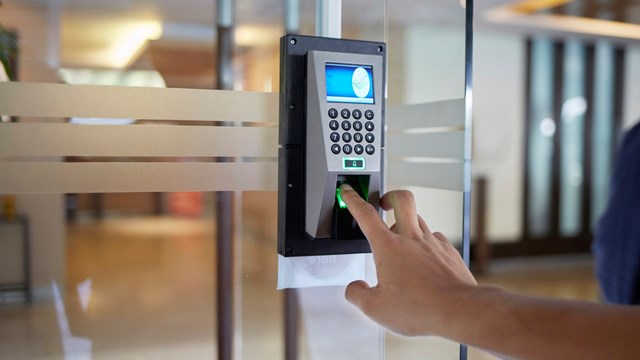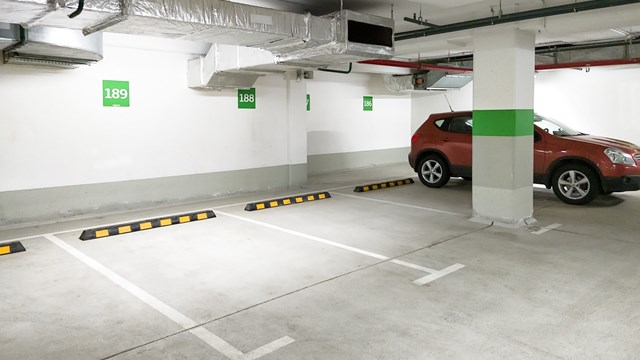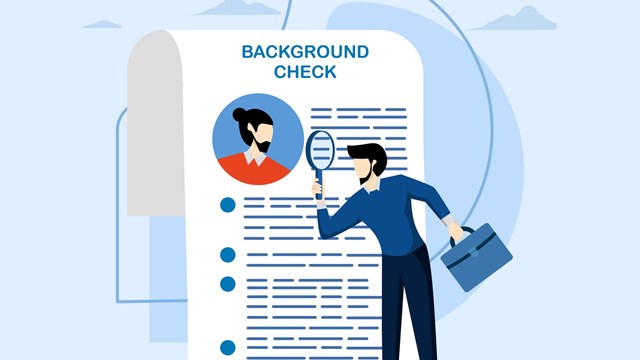
Whether you live in a single-family home, an apartment building, or an HOA, home security is a major concern. Providing that security can range from installing a simple alarm system to equipping and training building staff members to use sophisticated access and surveillance technology, to a hybrid approach incorporating both tech and people. A given community’s approach largely depends on the type of property and its location. A sprawling townhouse community in the suburbs has different security needs than a high-rise multifamily property in an urban location. What they do have in common, however, is the need to properly train those charged with maintaining that security.
Personnel vs. Technology
“When considering security training,” says Alon Alexander, president of Kent Security, a national security consultant with offices in New York, Florida, suburban D.C., and along the West Coast, “every building has its own problems. A luxury building on Park Avenue is different from a garden apartment on Staten Island. So when we talk security, we consider both manpower and systems provided, and create specific systems and training on a building-by-building basis. We design and install cameras, access control, intercoms, alarms, etc.—but we consider both personnel and technology, because they have to work together. We want to train personnel to know how to use those systems, what to look for, how to respond to a video alarm, and so forth. Mostly we install analytics, and the security personnel are then responding to an alarm—not staring at a screen and waiting for something to happen.”
In determining the people-to-technology mix that’s right for any specific building, one has to consider what resources already exist, how they can be used, what can be added to expand or improve the system, and how security personnel can be trained to use those resources. “This has to be pre-considered,” says Richard Sjoberg, a private investigator and president of Richard A. Sjoberg & Associates, a Boston-based security firm. “Resources include what locks and other barriers there are along the perimeter of the property, and how they function to keep people out. Is there a glass door? Are there concentric rings of security; a fence to keep the unauthorized out? If intruders break through the fence, what is the next level of security; the existing doors, locks, etc.? If they get through the doors and into the lobby, what can the staff do to stop them? Once an intruder enters a lobby, the guard must have situational awareness about themselves. Have they developed a pre-plan for the situation? The most important consideration for them is likely saving a life and preventing harm to someone, anyone. Property is just property. As security professionals, we need to make sure no one gets injured, or worse.”
David Malefsky, senior vice president for Admiral Security Services, a California-based company with east coast offices located in North Arlington, New Jersey, stresses the people side of the equation. “Doormen and concierges must be familiar with the building’s residents, established procedures, and how the two factors interact,” he says. “Oftentimes, residents cause additional problems by not knowing—or not following—procedures. We use technology that allows the doormen, board members, and management to view security situations 24/7.”
Know Your Neighbors
For security concerns both large and small, a building staff’s familiarity with the residents who live there is critical, even in very large properties. This extends to everything from thieves and burglars potentially entering the property with false ID, to identifying Airbnb abuses. “Most luxury buildings don’t ask residents for ID when they enter the building,” says Alexander, “[but] in an office building, everyone must show ID.” He says this lapse in residential security is a problem. “What if the regular doorman is on vacation and the substitute doesn’t know the residents’ faces?”
And it’s not just about matching faces to a resident roster, Alexander continues. “We train security employees to look at body language, to notice things and ask questions of strangers, all the while maintaining decorum, never being rude. We also recommend arming the elevator with access control. This way, the front desk attendants can greet people without an inquisition, but if they don’t have card access to the elevator, they don’t get upstairs. Training manpower to work with available technology is crucial.”
Airbnb and illegal subletting issues can be a problem in any building or HOA, regardless of size or means. Alexander trains employees to know what to look for that might indicate that a unit in the building is essentially being used as a hotel suite—which in addition to being a major security issue for neighbors is also likely forbidden by the building’s governing documents, and may even be against state or local laws, as is the case in New York City. Fundamentally, though, “it’s a quality-of-life issue,” Alexander stresses. “People show up to use amenities who don’t belong there.” And this is where frontline staff’s familiarity with the residents of the community is so crucial. If the front desk suspects that something improper is going on in a unit, they can alert the building or HOA’s management. If it’s management who’s initially made aware of the issue, they can put the front desk on notice, let them know what and who to look for, and instruct them what to do.
Malefsky concurs, pointing out that “today’s technology helps doormen identify anyone who lives in the building by sight, or by asking for ID. The truth is that residents don’t like to show ID, and that can lead to a security breach. Doormen or the concierge or both must identify who comes in. This is also true with deliveries, and vendors and service people. Residents don’t help security personnel if they flout building policies.”
A New Threat
While to those outside of major cities it may seem alarmist to even bring it up, the issue of rioting and other civil unrest is one that many urban residents have had to confront over the last year-and-a-half. Sjoberg says, “The rioting that has occurred in the past 18 months is something that just a few years ago you’d never think would happen. And you can’t really prepare for it. You don’t expect it.”
Now that such crisis situations are on the radar, Sjoberg continues, “The best approach now is to secure your property as best you can beforehand.” Actions taken in the midst of a crisis “are to protect the personal safety of those under your control and command, [as well as] the residents and property with the tools you’ve been provided.” In the case of a building with glass doors, for example, those tools may involve metal fencing or gates. “Glass doors are hard to defend when someone has a weapon to break them,” says Sjoberg, “But what building doesn’t have glass doors?” Sjoberg says that this is why his firm recommends the concentric ‘rings’ of security mentioned earlier.
De-escalation
While rare, it’s not unheard of for confrontations between neighbors, or between residents and visitors or other outsiders, to erupt in a building’s or association’s common areas. Whether it’s an interpersonal issue, a domestic dispute, or an intrusion by one or more people into the building, some confrontations have the potential to turn violent. And these days, sadly, there’s no shortage of accounts of minor disagreements escalating into verbal and even physical assaults, seemingly in the blink of an eye. The reasons for this are beyond the scope of this article, but the effect is something everyone should be aware of, and prepared to deal with, say the pros.
“Post-COVID, society has changed,” says Sjoberg. “People are reemerging into interpersonal relationships, but have been affected by the isolation. At no other time has depression and anxiety been higher. Medical professionals are overtaxed and can’t deal with all the cases.”
According to Sjoberg, when faced with the potential for violent behavior, the most important tool a security staff member has is de-escalation. “De-escalation is a great technique with violent or aggressive people,” he says. “When you de-escalate, you transmit a sense of being calm and genuine and having an interest in what is bothering the perpetrator while being respectful, clear, and setting boundaries. A staff member, manager, or doorman must also have situational awareness; where they are and who they interact with, so when this happens, it’s not the first time they’ve thought about it. They need to be prepared, which is why we provide this training for our clients.”
Alexander describes a similar approach. “With violent people, we teach staff to de-escalate and call the police. And whenever we get a report [of an incident], we check whether the cops were called, and what their response time was. We then share that information with the precinct.”
Malefsky has a similar protocol. “You calmly talk the person down to where there is no violence,” he says. “If you see a violent situation developing—including domestic violence—call 911 and notify the super or manager, and get the police there to handle any problem.”
When it comes to security personnel personally intervening in an active situation, policies differ between companies. “Security can only observe and use words to calm the situation,” says Malefsky, but “if the situation becomes violent, then security may hold and detain [the perpetrator] until police arrive.”
And while Malefsky and his colleagues agree that all security people should have crisis training, that doesn’t mean they need to—or should—be given crash courses in hand-to-hand combat or specialized self-defense training. “We don’t teach self-defense,” says Alexander. “We stress de-escalation. Where we have a stationary position [like a front desk, a doorman station, or a kiosk], we put a camera where we can monitor our employees for performance and their own safety.”
Fundamentally, ‘security’ is as much about securing peace of mind as it is about physically securing a building or property. By taking a critical look at your community’s unique needs and limitations, balancing those with residents’ expectations, enacting a well-thought-out plan, and making sure your building or HOA employees are on board and well trained, you can protect both the tangible and the less tangible assets of your building or HOA.
A J Sidransky is a staff writer/reporter for CooperatorNews. He is also a published novelist.









Leave a Comment